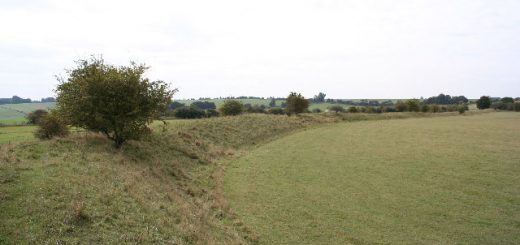Stanton Drew Stone Circle
The Neolithic ritual site of Stanton Drew consists of three stone circles and a group of stones referred to as ‘The Cove’. The largest of the circles known as the Great Circle consists of 27 stones, most of which are recumbent (lying down) having fallen in the past. Next to this is the Northeast Circle which has 8 stones and a group of stones leading from it, once part of an avenue such as those at Avebury in Wiltshire. The third circle is situated on private land some distance away.
The Cove, a small grouping of giant stones, stands close to the village church and has around 11 stones. The stones most probably date from around the same time as the Avebury circle about 2600 – 2500BC during what is known as the Neolithic Period.
Folklore and Legend
The stone circles and cove were thought to be the petrified remains of a wedding party turned to stone by the Devil. The cove consisting of the parson, bride and bridegroom, the other circles being the remains of the guests.
 According to the tale one Saturday, many years ago, there was a wedding feast on the site of the stone circle and everybody was having a merry time. When the clock struck twelve the party fiddler refused to play because it was Sunday, the Sabbath day. The bride, who was quite inebriated by this point swore that the party would go on, even if she had to go to hell to find a fiddler. No sooner had the words left her mouth, a tall dark man with a fiddle appeared and struck up a tune. Faster and faster he played and the wedding party were compelled to keep up with the tune. This went on all night and by the morning the whole of the group had turned to stone, and the Devil had made off with their souls.
According to the tale one Saturday, many years ago, there was a wedding feast on the site of the stone circle and everybody was having a merry time. When the clock struck twelve the party fiddler refused to play because it was Sunday, the Sabbath day. The bride, who was quite inebriated by this point swore that the party would go on, even if she had to go to hell to find a fiddler. No sooner had the words left her mouth, a tall dark man with a fiddle appeared and struck up a tune. Faster and faster he played and the wedding party were compelled to keep up with the tune. This went on all night and by the morning the whole of the group had turned to stone, and the Devil had made off with their souls.
There was one survivor of the ordeal. The village fiddler who had refused to play at the stroke of midnight was found the following morning, cowering in fear at what he had seen during the night. Traditionally the Devil said that he would return one day to play for them again.
Another tradition connected with the stones is that they are uncountable. Anybody who tried to count the stones would either die on the spot or become ill soon afterwards.
Directions: The circles are signposted on the B3130, payment is required from a nearby farm to view the circles. The Southwest circle is not open to the public.




Re: Stanton Drew Stone Circle
It’s weird that so many stone circles have such similar folklore, up and down the country, isn’t it? The uncountable stones and diabolic associations apply to Cumbrian stone circles, too. I guess that just reflects post-Reformation attitudes to something they didn’t understand. Not that we necessarily understand much more!
I visited Stanton Drew last year. It an interesting site and both the stones and the diameter are impressively large. Somehow, it didn’t resonate for me as, say, Long Meg or Avebury does.